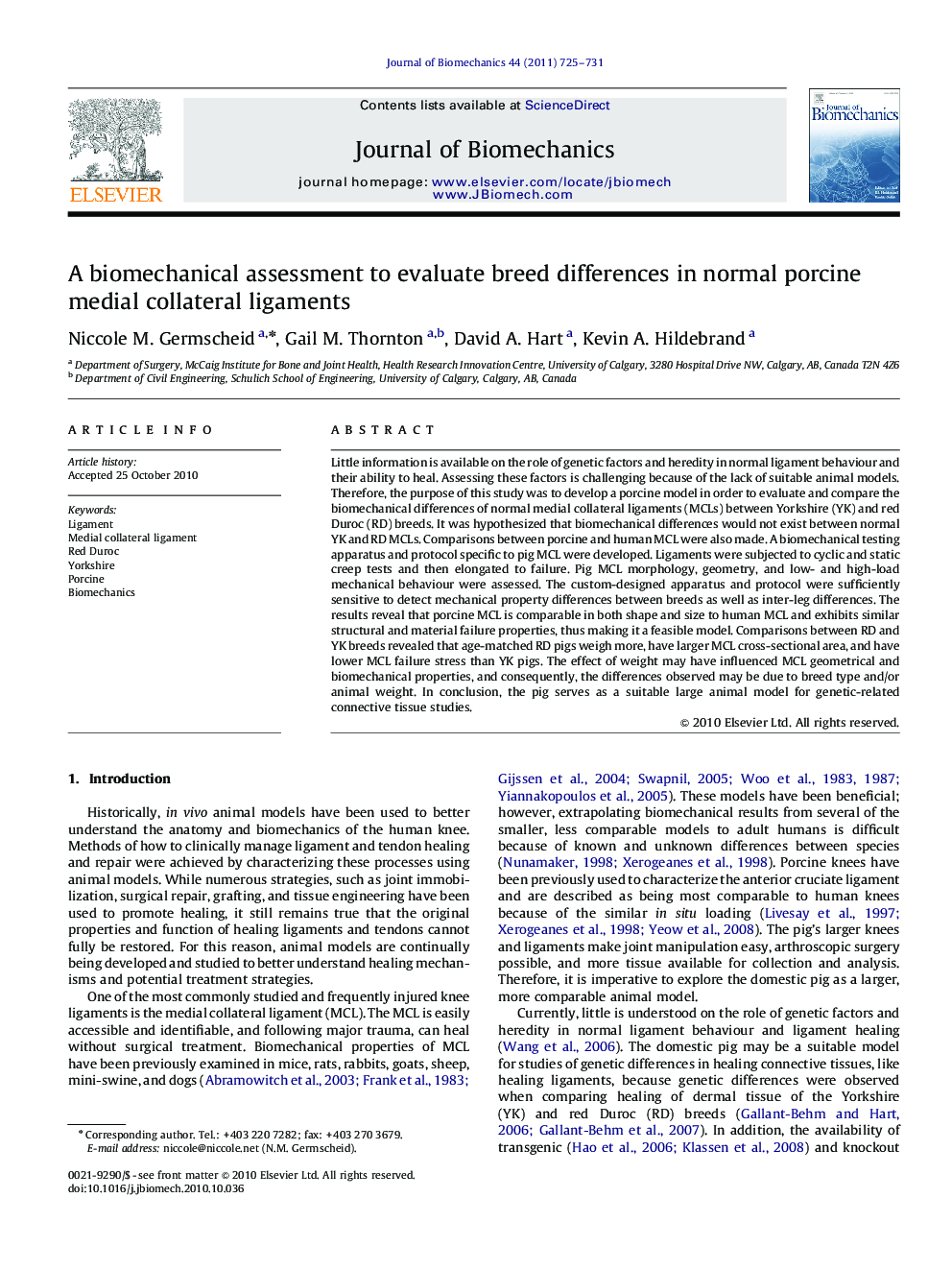| Article ID | Journal | Published Year | Pages | File Type |
|---|---|---|---|---|
| 10433283 | Journal of Biomechanics | 2011 | 7 Pages |
Abstract
Little information is available on the role of genetic factors and heredity in normal ligament behaviour and their ability to heal. Assessing these factors is challenging because of the lack of suitable animal models. Therefore, the purpose of this study was to develop a porcine model in order to evaluate and compare the biomechanical differences of normal medial collateral ligaments (MCLs) between Yorkshire (YK) and red Duroc (RD) breeds. It was hypothesized that biomechanical differences would not exist between normal YK and RD MCLs. Comparisons between porcine and human MCL were also made. A biomechanical testing apparatus and protocol specific to pig MCL were developed. Ligaments were subjected to cyclic and static creep tests and then elongated to failure. Pig MCL morphology, geometry, and low- and high-load mechanical behaviour were assessed. The custom-designed apparatus and protocol were sufficiently sensitive to detect mechanical property differences between breeds as well as inter-leg differences. The results reveal that porcine MCL is comparable in both shape and size to human MCL and exhibits similar structural and material failure properties, thus making it a feasible model. Comparisons between RD and YK breeds revealed that age-matched RD pigs weigh more, have larger MCL cross-sectional area, and have lower MCL failure stress than YK pigs. The effect of weight may have influenced MCL geometrical and biomechanical properties, and consequently, the differences observed may be due to breed type and/or animal weight. In conclusion, the pig serves as a suitable large animal model for genetic-related connective tissue studies.
Related Topics
Physical Sciences and Engineering
Engineering
Biomedical Engineering
Authors
Niccole M. Germscheid, Gail M. Thornton, David A. Hart, Kevin A. Hildebrand,
